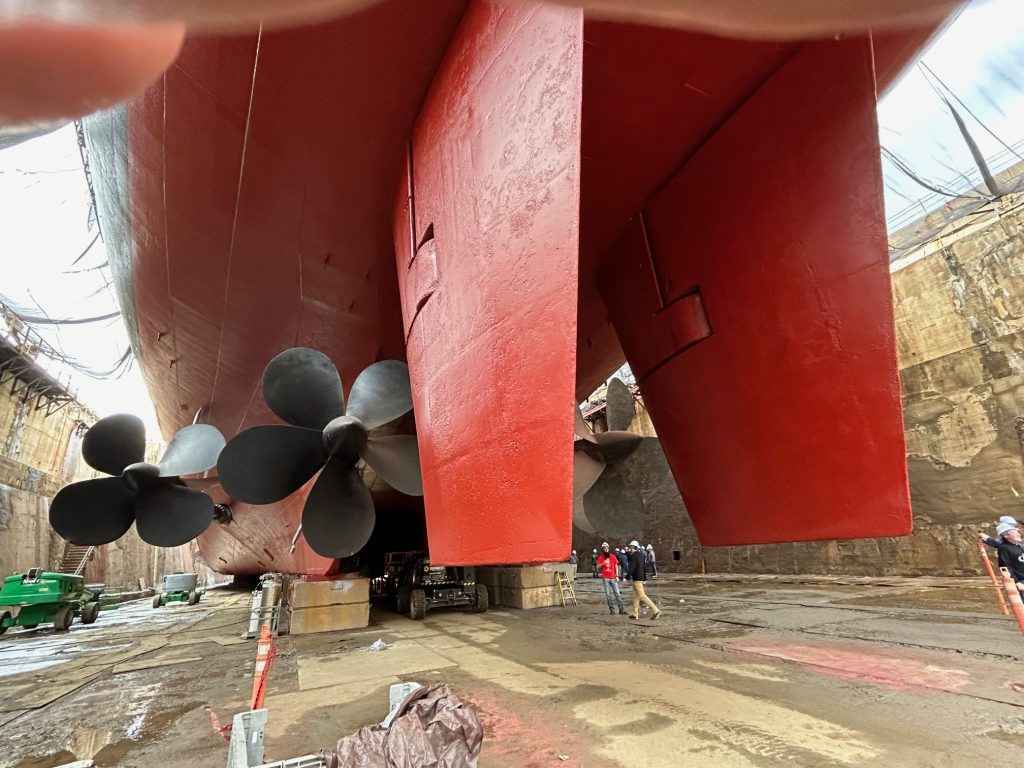
Beneath the belly of the Battleship New Jersey
| May 27, 2024
To speak of the USS New Jersey is to speak in superlatives: The most decorated battleship in American history. It engaged in more shore bombardment than any other Iowa-class ships. It’s been deemed the fastest battleship in history by the Guinness Book of World Records.
The hulking ship, which was launched exactly a year after the Japanese attack on Pearl Harbor, was in active duty for more than 21 years and served in World War II, the Korean and Vietnam Wars, during the Cold War and conflicts in the Middle East. It saw more combat in WW II than any other Iowa-class battleship.
But at 82 years old, it’s been in need of shore leave for some R&R.
That’s why since March it’s been in dry dock at the Philadelphia Naval Shipyard undergoing a battleship’s version of a check-up and spa treatment of power-washing, painting and caulking, as well as an examination of its hull and other components.
The Home Port Alliance for the USS New Jersey, which runs the Battleship New Jersey Museum and Memorial in Camden, N.J., seized a rare opportunity for visitors to see the battleship out of the water and up close.
Guided tours offer stunning access to the battleship that might not be available again for another generation. (The last time it was in for dry dock maintenance was more than 30 years ago.)
“It’s not every day you see a battleship in dry dock,” said Hannah Southern, a 17-year Navy veteran who is stationed in San Diego, who was on a recent guided tour.
Indeed, she’s right.
The USS New Jersey is ready for its close-up. Let’s take a look.
Did you know…?
- Its rudders can be manipulated independently of each other.
- It has four propellors, two that are 17 feet tall, and two that are 18 feet tall.
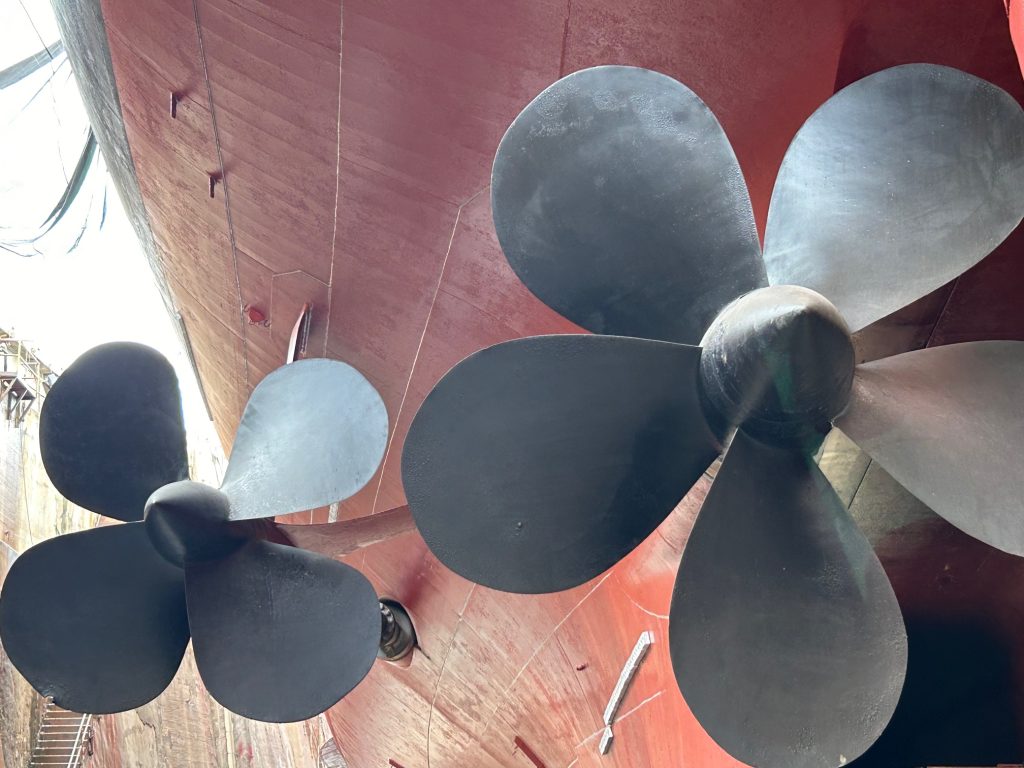
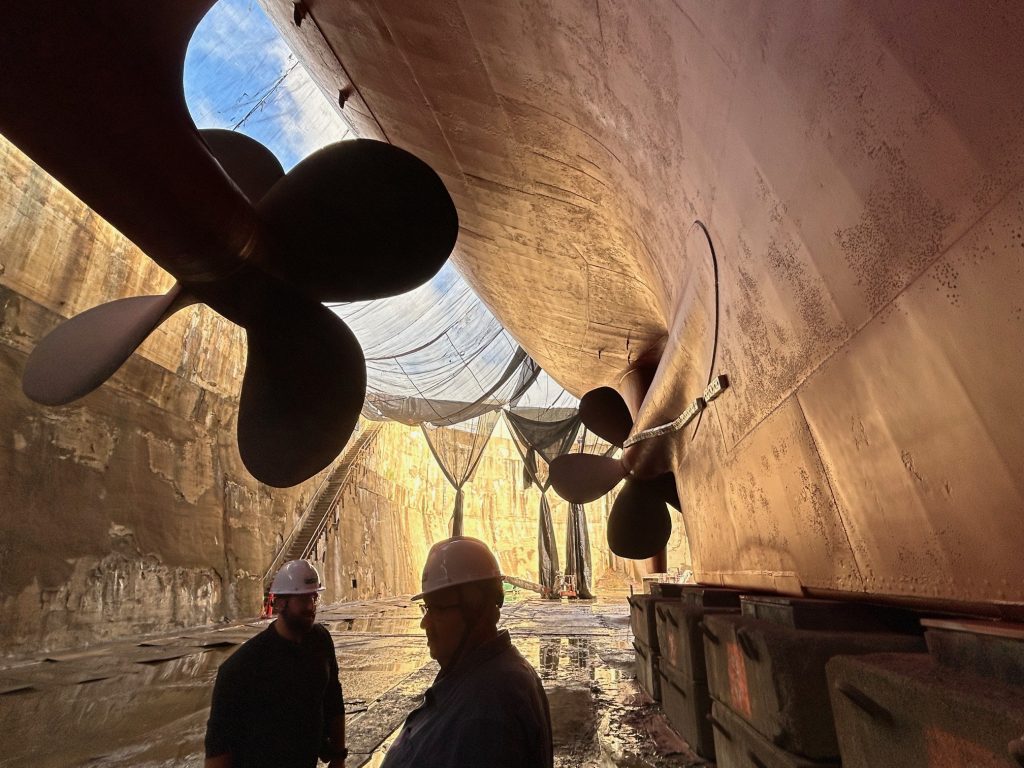
The New Jersey is resting in Dry Dock No. 3, a canyon of concrete with a foundation 30 feet deep. The caisson, the gigantic door that keeps the water from getting in, is held in place by the pressure of the Delaware River against it.
To access the dry dock means descending 50 feet by concrete stairs. Helmets, eye protection and steel-tipped protectors are required for the tours. As part of your $225 tour ticket, you get to keep the commemorative hard hat.

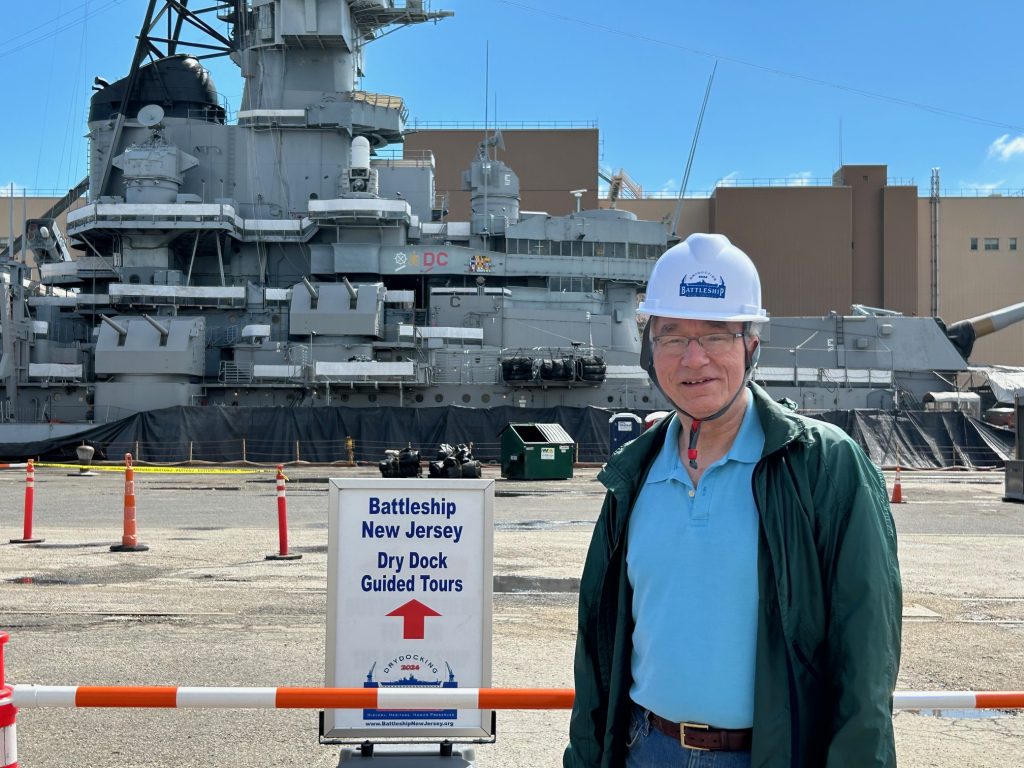
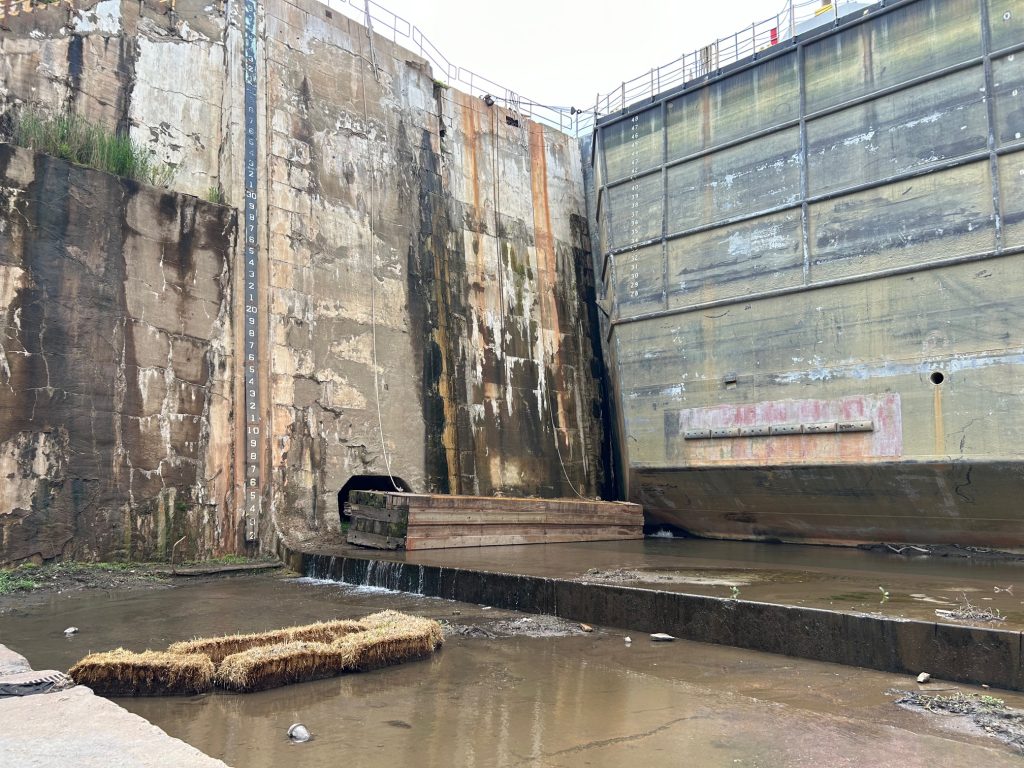
The ship’s hull is undergoing a three-phase makeover consisting of a low-pressure power wash to remove algae and other marine growth, followed by a high-pressure wash to remove paint and expose the hull down to the bare metal, followed by three layers of paint.
Did you know…?
- Each of the battleship’s two anchors weigh 30,000 pounds, or about the weight of an unloaded tractor-trailer.
- The chains for the anchors are 1,122 feet long.
- Each chain link weighs 123 pounds.

At 45,000 tons, the New Jersey in 1942 was the heaviest stern-first-launched ship in the Western Hemisphere and the heaviest American battleship built up to that point.
There were concerns that the New Jersey was so heavy that, when it came time to launch it, that it would not budge even after its locking devices were released.
To allay these fears, crews slathered the rails of the slipway with 50 tons of lard, which at the time was being rationed during war time.
For some perspective, according to Ryan Szimanski, the battleship’s curator, if you relied on Depression-era recipes and used that much lard, you could have produced 10.5 million chocolate cookies. That’s one cookie for every enlisted U.S. soldier during WW II!
The excessive use of lard as a lubricant proved to be unnecessary.
When the New Jersey was launched, it bolted so fast from its perch that the tugboats in place could not grab it in time and the battleship sped all the way to the other side of the Delaware River to New Jersey.
Did you know…?
- The hull in the bow is thinner to accommodate a potential armor-piercing missile attack. The thinner plating would allow for a through-and-through clean entry and exit. With the thinner plating, such an attack would leave a 14-inch hole that would be easier to repair versus a gaping 20-foot hole left by an explosion.
- The bilge keel, a long, narrow metal fin that extends from both sides of the hull and is designed to reduce the ship’s tendency to roll, gets dinged the most because it extends out the farthest, resulting in some sections that are misshapen or bent.
- Riveting was once a popular method to make repairs but that eventually gave way to welding instead. Part of the problem was that the hot rivets used for repairs would radiate heat, and in turn, cause other adjoining rivets to expand and pop, making for a game of Whac-a-Rivet for repair crews.


In the years between 1969, when it was being readied for the Vietnam War, to 1982, when it was last in dry dock, something left what looks to be at least a palm-sized dent in the hull.
It’s not exactly clear what happened but one theory is that the forward momentum of a dropped anchor might have left the mark. No records have been found to document the ding’s origins.
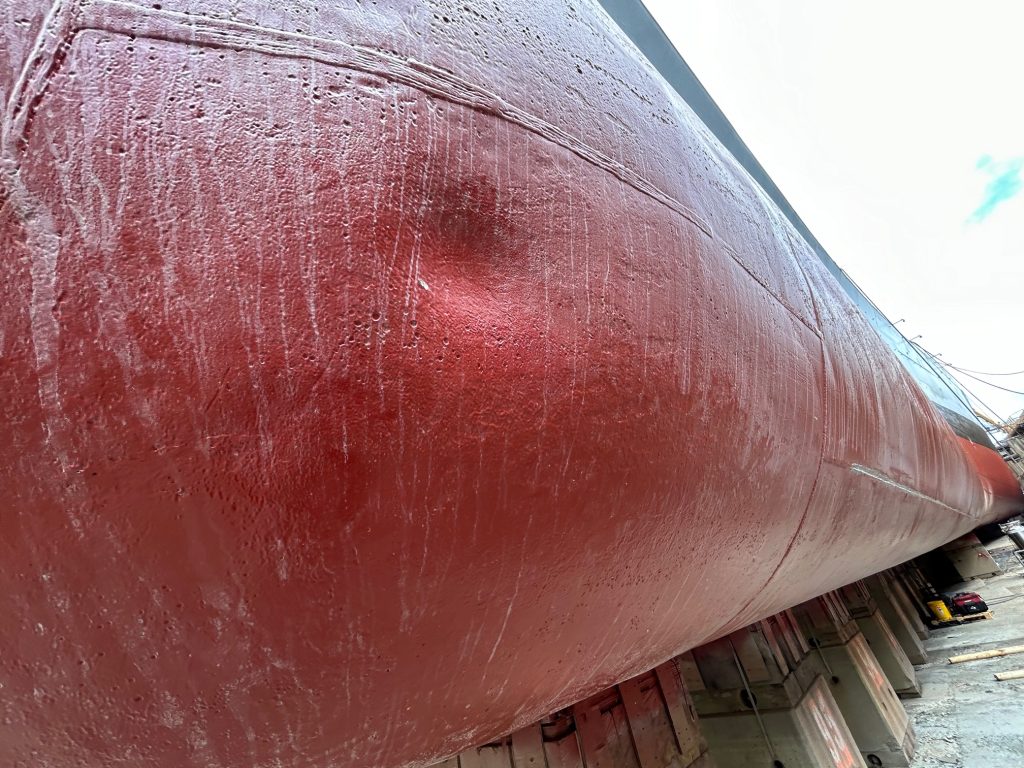
The way the New Jersey is raised on more than 300 concrete blocks calls to mind a vehicle being put on a hydraulic lift so you can get under it for repairs. The difference being, of course, that the ship weighs 45,000 tons and is more than 880 feet long.
The tour affords an incredible view under the hull, creating a darkened tunnel effect that crews refer to as the “Hulland Tunnel.”
For taller visitors, the helmets were useful because there was more than once when hard plastic met metal hull.
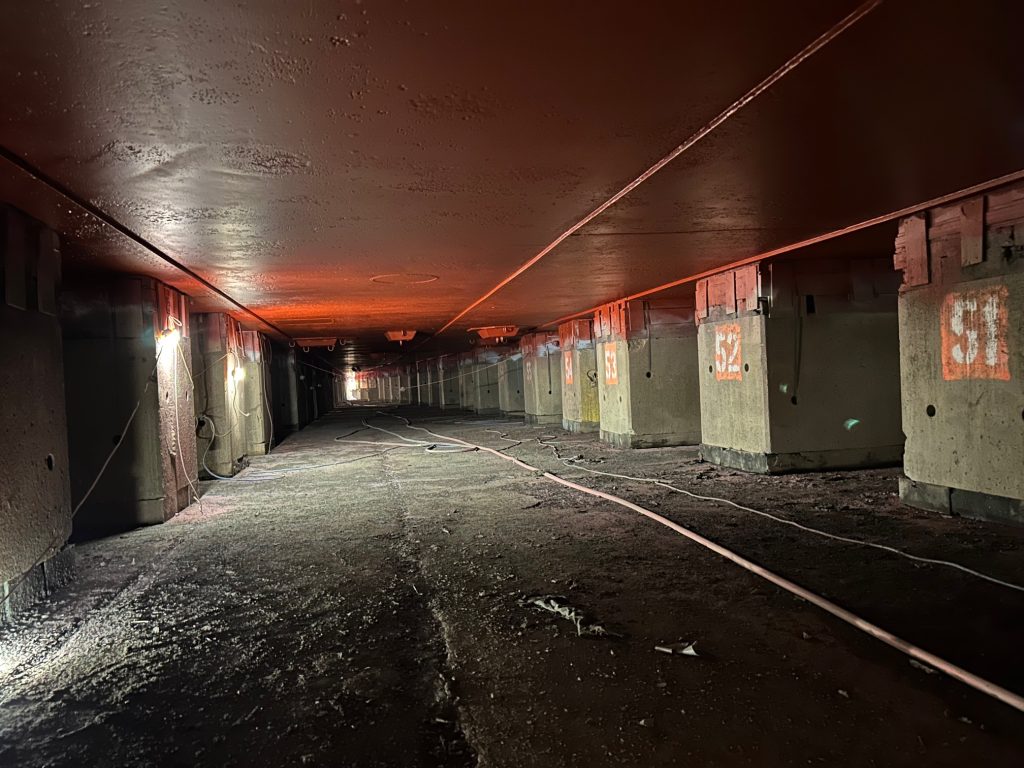
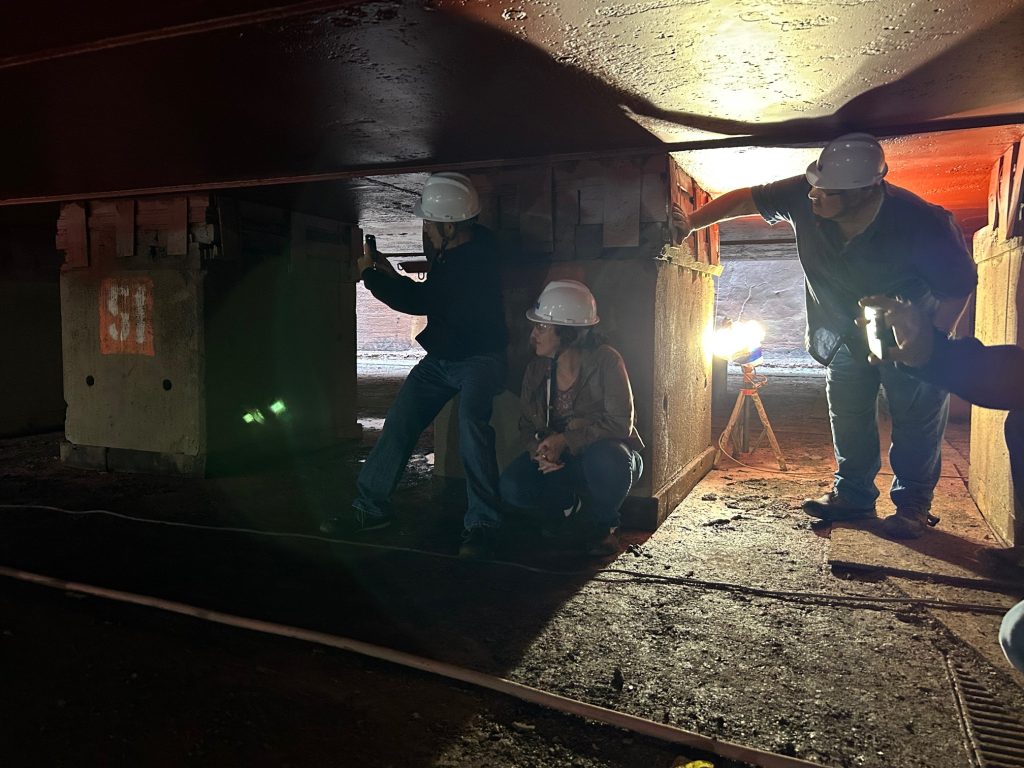
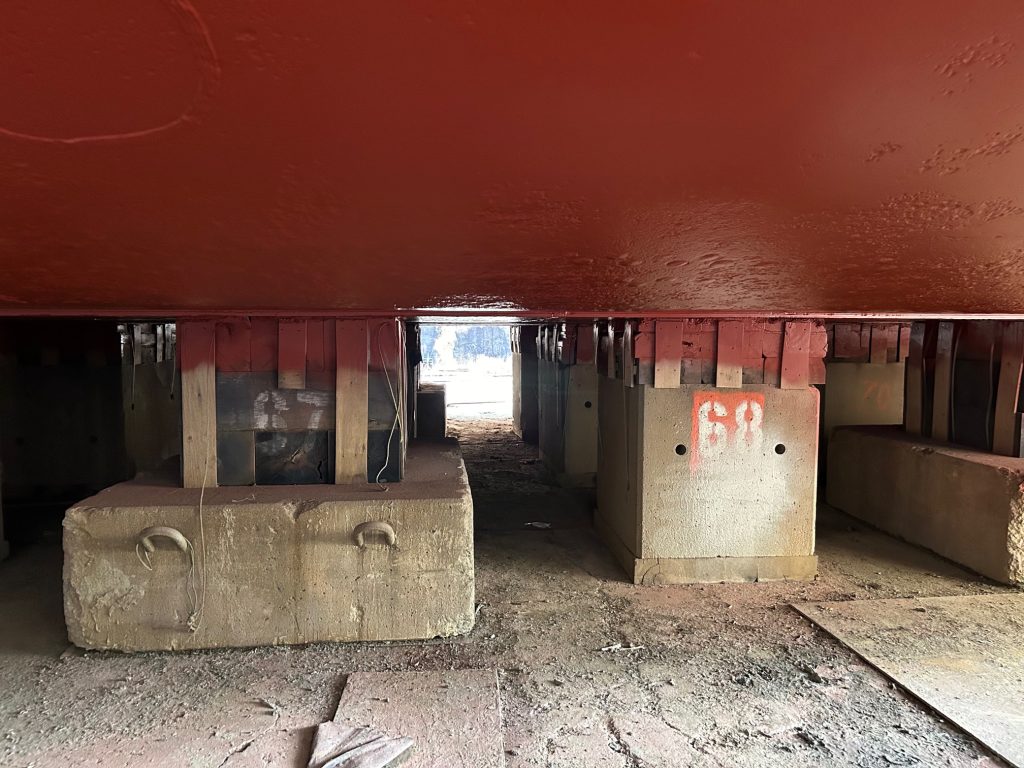
Did you know?
- The sections of the ship that rest on the large blocks and that are currently inaccessible will eventually be painted. The dry dock will be flooded, the ship repositioned and the dry dock drained to allow for those unpainted sections to be accessed.
- The USS New Jersey was launched on Dec. 7, 1942, from what was a slipway at Philadelphia Ship Yard about 100 yards from its current resting place. The former slipway site is now a parking lot.
- Crews hope to complete the dry dock work and return the New Jersey to its Camden home by mid-June.

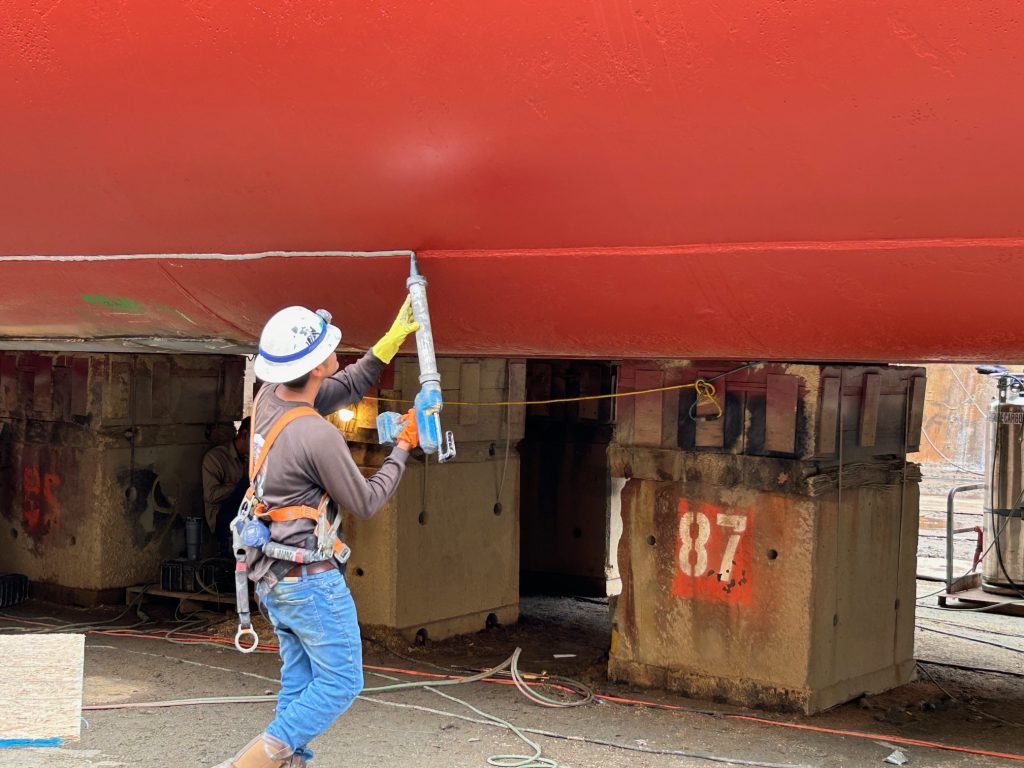
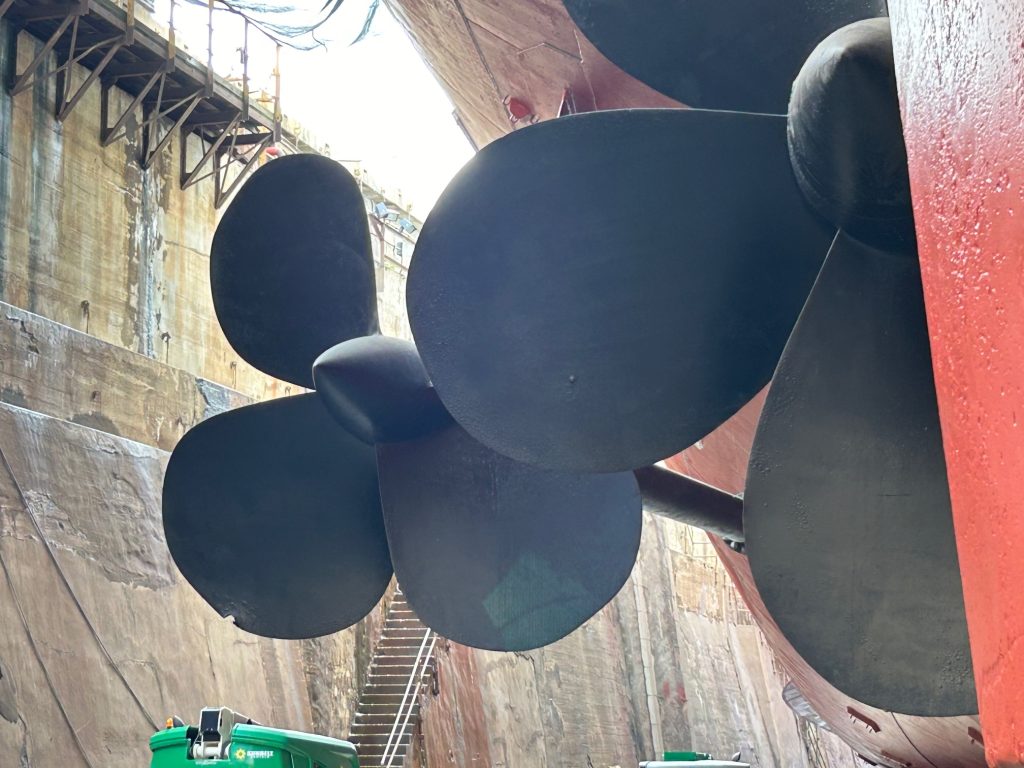
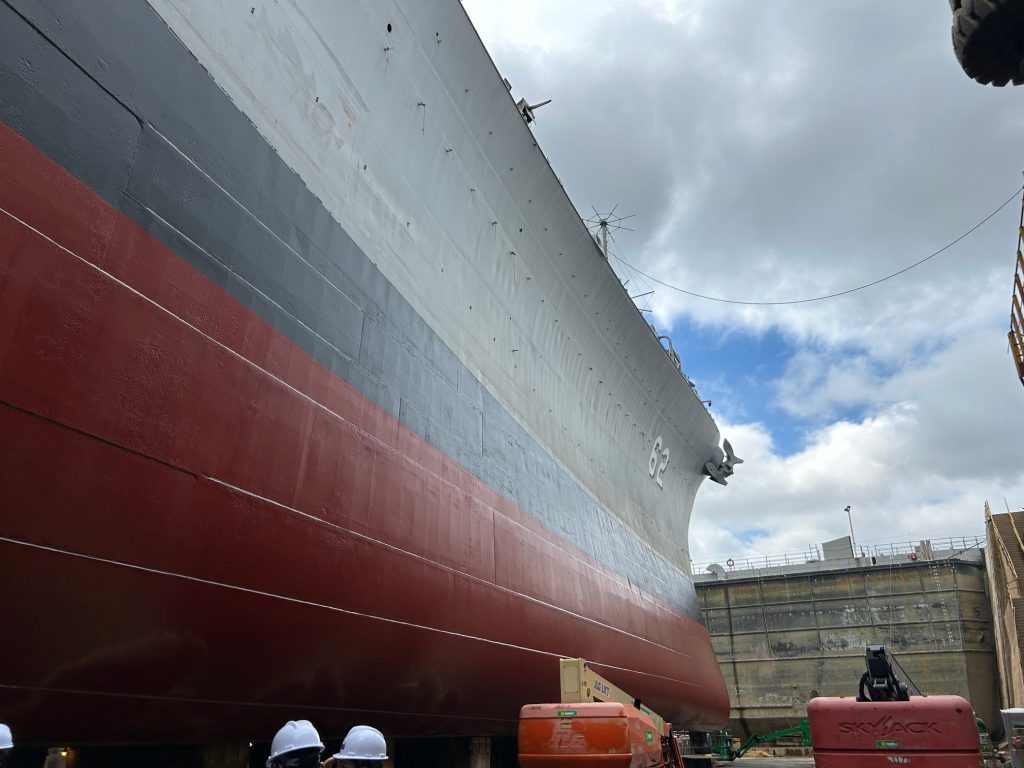

Read more: Battleship New Jersey is sent to dry dock with flourish and fanfare
Read more: USS New Jersey to travel the Delaware River in 2024, headed for repairs








It’s good they’re taking care of her ! Ya just never know when ya might need a battle ship —- again !
In 1970, I was standing on the beach between Cam Rahn Bay and Nha Trang Vietnam. I spotted the New Jersey and then it fired at me. Well, actually, it was shooting way over my head and probably 15 to 20 miles behind me. But, the shells broke the sound barrier and made explosive sounds. Someone told me that each shell weighed about the same as a Volkswagen. All I could think of at that moment was the scene from “The Longest Day”.
Glad to see they’re keeping her in shape. She deserves it. Great ship lots of history 😃
Put Big J back in service in the US Navy. Carriers are impressive to look at. But a battleship sitting a few miles offshore scares the shit out of an enemy.
Was in Beirut 1984 the jersy and Iowa..pulled bow to bow..and unloaded all 8 turrets 4 per ship in succession for 5 hours at night The Sky litup like it was noon…when the sun came up..Beirut was leveled and looked like the FACE OF the Moon..